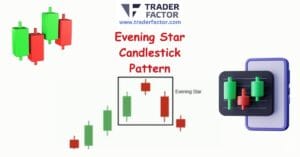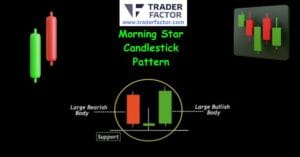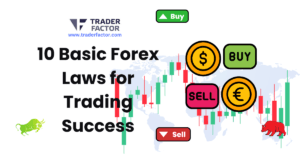When you start exploring the stock market, you might come across the term “dividend stock for beginners,” and it’s worth understanding. These stocks belong to companies that share a part of their profits with shareholders in the form of dividends. They can provide a steady income stream while still offering potential for growth. If you’re a beginner, dividend stocks are often seen as a good option because they tend to come from established companies with reliable performance. To help you get started, we’ll break down what dividend stocks are, how they work, and why they might be worth considering for your portfolio.
Table of Contents
ToggleWhat Are Dividend Stocks for Beginners?
If you’re new to investing, the term “dividend stock” might sound a bit intimidating, but it’s actually straightforward. Dividend stocks are shares of companies that reward their shareholders by paying them a portion of the company’s profits. This payment, known as a dividend, can provide you with a steady income stream while you remain invested in the company. They’re often considered a great option for beginners since many dividend-paying companies tend to be well-established with stable performance.
Now, let’s break it down further to help you understand how dividend stocks work and how you can make informed investment decisions.
Understanding Dividends
A dividend is essentially the company’s way of sharing its success with its investors. When companies generate profits, they have a few options, they can reinvest the money into their business, keep it as savings, or distribute it to shareholders as dividends.
Dividends are typically paid out quarterly, though some companies distribute them monthly or annually. For example, if you own shares in a company that pays a dividend of $1 per year and you hold 50 shares, you’d receive $50 annually. These payments allow you to earn returns while still holding onto your shares.
Investors often view dividend stability as a sign of a company’s financial health, making dividend stocks an attractive choice for those seeking both income and growth potential.
Dividend-Paying Companies
Not all companies pay dividends, but those that do usually share some key characteristics. Dividend-paying companies are often well-established, with a record of consistent earnings. Many of these firms operate in mature industries, like utilities, consumer goods, financial services, and energy.
For example:
- Utilities like Duke Energy tend to pay dividends due to their steady cash flow.
- Consumer goods companies such as Coca-Cola or Procter & Gamble attract investors with their long-standing dividend histories.
- Real Estate Investment Trusts (REITs) are also known for high dividend payments, as they are legally required to distribute most of their income to shareholders.
These types of companies value stability and tend to appeal to income-focused investors.
Which Companies Don’t Pay Dividends?
Some companies make the strategic choice not to pay dividends, particularly if they’re in growth-oriented industries. These firms prefer to reinvest their profits to fuel innovation and expansion.
For example, tech companies like Tesla or Amazon are known for their focus on growth, which often precludes dividend payments. They use profits to develop new products, explore acquisitions, or expand into new markets.
This isn’t a bad thing—investors in these companies generally rely on stock price growth for returns, rather than dividends.
Evaluating Dividend Stocks
When deciding whether a dividend stock is worth your investment, there are several factors to consider.
Dividends’ Impact on Stock Price
When dividends are paid out, the stock’s share price is typically adjusted downward by the amount of the dividend. This is because the company’s cash reserves are reduced by the same amount. However, well-established companies tend to stabilize quickly after such adjustments.
Metrics to Watch:
- Dividend Yield: This shows the annual dividend as a percentage of the current share price. A higher yield can indicate a better return but may also signal risks, especially if it’s unusually high. A dividend yield of more than 5% is preferable.
- Payout Ratio: This is the proportion of earnings paid out as dividends. A payout ratio below 50% is generally considered sustainable.
- Historical Performance: Long-term consistency in dividend payouts signals trustworthiness.
Best Dividend Stocks to Watch in 2025
Here’s a quick look at some of the best dividend stocks currently considered attractive in February 2025:These companies are widely recognized for generating consistent dividends and are worth considering if you are building a dividend-focused portfolio.
| Ticker | Stock Name | Current Price (USD) | Market Cap (Billion USD) | Dividend Yield (%) | Sector |
|---|---|---|---|---|---|
| NYSE: MO | Altria Group Inc. | 52.23 | 88.52 | 7.8 | Consumer Goods |
| NYSE: VZ | Verizon Communications Inc. | 39.39 | 165.83 | 6.9 | Telecommunications |
| NYSE: DOW | Dow Inc. | 27.34 | 39.05 | 6.8 | Materials |
| NYSE: BEN | Franklin Resources Inc. | 22.24 | 11.65 | 6.4 | Financials |
| NYSE: AES | AES Corp. | 11.00 | 7.82 | 6.2 | Utilities |
Altria Group Inc.
Altria Group, based in the United States, is one of the largest producers of tobacco and nicotine products. Known for its flagship Marlboro brand, Altria has been a reliable dividend payer for decades. The company’s strong cash flow and steady customer base have allowed it to consistently increase dividends over the years. Although the tobacco sector has faced regulatory challenges, Altria has diversified its portfolio into smokeless tobacco and cannabis investments, further solidifying its ability to maintain generous dividend payments. Its focus on stability makes it a favorite among income-seeking investors.
Verizon Communications Inc.
Operating as a major telecommunications provider, Verizon Communications is renowned for its extensive network infrastructure and steady customer base. The company has a long history of rewarding its shareholders through dividend payouts. Its stable performance in the telecom sector, coupled with a focus on 5G innovation, has enabled consistent and competitive dividend payments. While the capital-intensive nature of its business can strain resources, Verizon remains committed to maintaining shareholder value through reliable returns.
Dow Inc.
Dow is a global leader in materials science, specializing in packaging, manufacturing, and other industrial applications. Established as an independent publicly traded company following a corporate reorganization in 2019, Dow has quickly built a reputation as a strong dividend payer. Industries such as consumer goods and construction rely heavily on its materials, ensuring steady demand. Dow continues to balance growth initiatives with shareholder returns, making dividends a priority even amidst economic fluctuations.
Franklin Resources Inc.
Franklin Resources, operating under the well-known Franklin Templeton Investments brand, is a global investment management company. With over 75 years in the industry, it has built trust among its investors. The company is recognized for its steady and reliable dividend history. Despite shifting market conditions, Franklin Resources remains focused on delivering consistent income to its shareholders, supported by its expansive portfolio of investment funds and a disciplined financial strategy.
AES Corp.
AES Corp. is a diversified utility company involved in the generation and distribution of power through renewable and traditional energy sources. Known for prioritizing sustainability, AES continues to invest heavily in clean energy projects like solar and wind farms. Its consistent dividend payouts appeal to investors seeking both income and exposure to environmentally conscious businesses. By balancing its focus on green energy with reliable returns, AES maintains its position as a high-yield dividend stock amid a competitive utility market.
How to Invest in Dividend Stock For Beginners
Here are a few tips to help you start investing in dividend stocks:
Dividend Payout Ratio
This ratio helps you understand how much of a company’s earnings go toward dividends. A lower ratio (under 50%) often indicates stability and room for growth.
Dividend Yield
Look for stocks with a steady yet realistic yield. Excessively high yields might seem appealing but could suggest financial troubles.
Dividend Coverage Ratio
This metric measures how many times a company’s earnings can cover its dividends. A higher ratio means more security for the dividend payouts.
How to Build a Diversified Portfolio
Diversification is key when investing. Instead of putting all your money into a few dividend stocks, consider spreading your investments across multiple sectors. For example:
- Include a mix of high-yield stocks and dividend growth stocks.
- Consider REITs for real estate exposure.
- Add consumer staples and utilities for stability.
Diversification reduces risk and ensures balanced growth.
Best Platforms to Use When Investing in Dividend Stocks for Beginners
If you’re new to investing, using the right platform can make all the difference. Here are some beginner-friendly platforms:These platforms make it easy to start investing, even with smaller amounts of money.
- Robo-Advisors like Betterment and Wealthfront help automate your portfolio while keeping fees low.
- Online Brokerages like Charles Schwab or Fidelity offer research tools and resources for learning about dividend stocks.
Pros and Cons of Investing in Dividend Stocks
Pros:
- Regular Income: Dividend payments can supplement your earnings.
- Lower Volatility: Dividend stocks often belong to stable companies.
- Compounding Returns: Reinvesting dividends can increase overall growth.
Cons
- Slower Growth: These stocks might not have the rapid price appreciation seen in growth stocks.
- Dividend Cuts: Payments may decrease during economic downturns.
Frequently Asked Questions

How does a dividend stock work?
A dividend stock represents ownership in a company that shares a portion of its profits with shareholders as dividends. These payments are typically made quarterly and can provide a steady income stream while you retain your investment in the stock.
How much stock to make $1000 a month in dividends?
To generate $1,000 per month, you would need investments in high-dividend stocks yielding around 5% to 6%. This could require a portfolio size of approximately $200,000 to $240,000, depending on dividend yields.
What are the disadvantages of dividend stocks?
Dividend stocks can carry lower growth potential because companies prioritize paying dividends over reinvesting profits. They are also subject to market risks, and dividends are not guaranteed during economic downturns or financial struggles.

Is Apple a dividend stock?
Yes, Apple is a dividend stock and pays regular dividends to its shareholders. While it offers reliable payouts, its yield is relatively lower compared to high-dividend stocks.
What is dividend stocks?
Dividend stocks are shares in companies that regularly distribute a portion of their earnings to shareholders as payments. They are often chosen by investors seeking steady income and long-term portfolio stability.
What is the best dividend stock to buy?
The best dividend stock depends on your financial goals, such as high yields, stable payouts, or long-term growth. Focus on companies with strong fundamentals and a consistent dividend history.
Which stock is best to buy for beginners?
Beginner investors might benefit from dividend stocks offered by large, stable companies with a track record of consistent payouts. Always research the company’s financial health before investing.

Are dividend stocks worth it?
Dividend stocks can be worth it if you value steady income and long-term investment growth. However, they may not suit those seeking rapid capital appreciation.
Which stocks pay monthly dividends?
Certain real estate investment trusts (REITs), business development companies (BDCs), and some income funds offer monthly dividend payments. These can provide regular income but may come with higher risks.
How to pick dividend stocks?
Look for stocks with stable earnings, a consistent dividend payout history, and good metrics like a low payout ratio and a high dividend yield. Diversify across sectors to reduce risk.
How to make $500 a month in dividends?
To earn $500 monthly, aim to invest in high-dividend stocks with yields around 5%. You might need a portfolio of $120,000 to achieve this, depending on stock performance.

What is the highest paid dividend stocks?
High-dividend stocks with 7% yields or higher are among the top-paying options. These stocks typically include companies in energy, utilities, or real estate sectors, but be cautious about sustainability.
Is investing in dividend stocks a good strategy?
Investing in dividend stocks is a good strategy if you’re seeking consistent income and diversification. However, the approach works best when combined with research and a balanced portfolio.
What is the safest dividend stock to buy now?
The safest dividend stocks are from financially strong companies with a decades-long history of stable dividends. Look for businesses with low payout ratios and operations in recession-resilient sectors like utilities or consumer staples.

Final Thoughts
Investing in dividend stocks can be a great strategy for beginners seeking to build wealth over time. By understanding what dividends are, learning how to evaluate dividend-paying companies, and using reliable investment platforms, you can make informed decisions. Whether you’re looking for monthly dividend stocks, the highest dividend-paying stocks in the US, or the top dividend stocks to buy and hold, the key is to focus on sustainability and long-term growth potential.
By approaching this steadily and wisely, you’ll be well on your way to building a portfolio that balances income and growth.
Disclaimer:
All information has been prepared by TraderFactor or partners. The information does not contain a record of TraderFactor or partner’s prices or an offer of or solicitation for a transaction in any financial instrument. No representation or warranty is given as to the accuracy or completeness of this information. Any material provided does not have regard to the specific investment objective and financial situation of any person who may read it. Past performance is not a reliable indicator of future performance.















